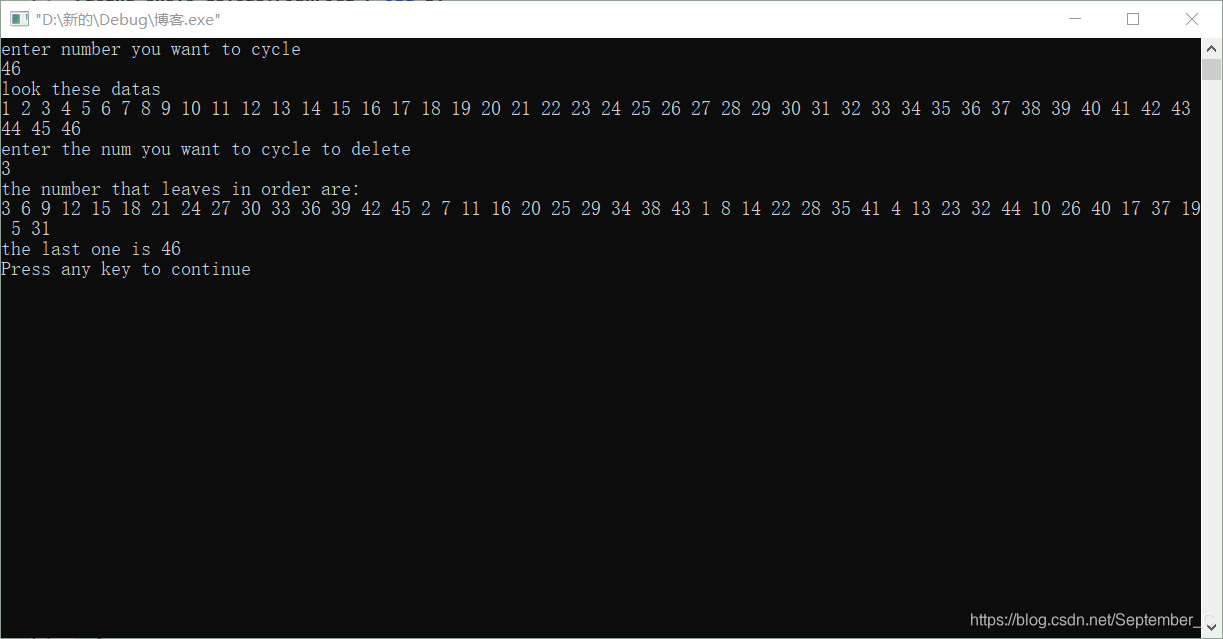Área de código
Joseph Ring: ¡Implementado en lenguaje C-like! ! ! Se puede ejecutar con éxito! ! ! No solo un algoritmo, sino una verdadera clase C
#include<stdio.h>
#include<stdlib.h>
typedef int ElemType;
typedef struct LNode
{
ElemType data;
struct LNode *next;
}LNode,*LinkList;
enum Status{ERROR,OK}; //此处使用枚举类型
Status InitList(LinkList &L,int n)//初始化
{
LinkList p,q;
L=(LinkList)malloc(sizeof(LNode));//申请头结点的空间
L->next=NULL;
p=L;
for(int i=1;i<=n;i++) //输入数据域
{
q=(LinkList)malloc(sizeof(LNode));
q->data=i;
p->next=q;
p=q;
}
p->next=L->next; //首尾连接(注意,因为头结点没有真实数据域,所以是L->next)
return OK;
}
Status cycle_delete(LinkList L,int n)
{
LinkList p=L,q;
printf("the number that leaves in order are:\n"); //依次出局的数字为
while(p->next!=p) //当链表只有一个结点的时候(不包括头结点)
{
for(int i=1;i<n;i++) //n为循环次数
{
p=p->next;
}
q=p->next;
p->next=q->next;
printf("%d ",q->data);
free(q);
}
printf("\n");
printf("the last one is %d\n",p->data);
free(p);
return OK;
}
Status show(LinkList L)
{
LinkList p;
p=L->next;
printf("look these datas\n");
printf("%d ",p->data);
p=p->next;
while(p!=L->next)
{
printf("%d ",p->data);
p=p->next;
}
printf("\n");
return OK;
}
int main()
{
LinkList L;
int n,m;
printf("enter number you want to cycle\n");
scanf("%d",&n);
InitList(L,n);
show(L);
printf("enter the num you want to cycle to delete\n");
scanf("%d",&m);
cycle_delete(L,m);
return 0;
}
Área de prueba

